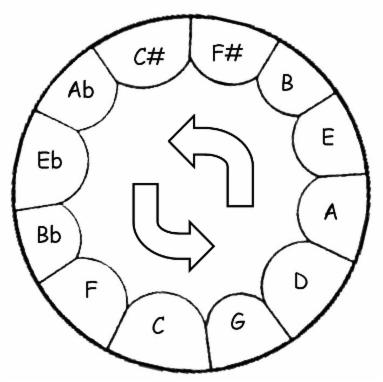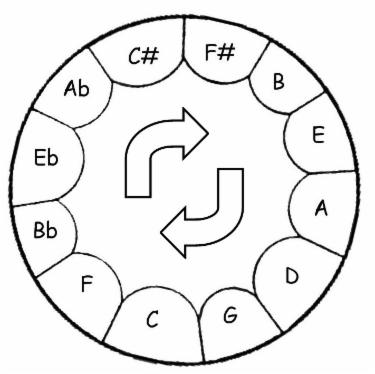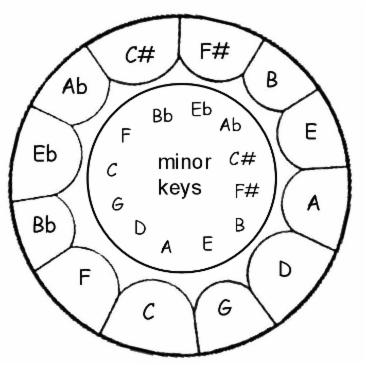>
Circle of Fifths


The circle of fifths shows the relationships between the twelve tones of the chromatic scale, their corresponding key signatures, and the associated major and minor keys.
Starting at any note and playing anticlockwise, the notes ascend by a fifth. You play all twelve notes in the chromatic scale until you come back to the beginning or starting point. Reversing the direction, playing notes separated by a fourth (descending by a fifth), gives the same result.
At the bottom of the pan is the note C. The corresponding key signitaure is the key of C which has no sharps or flats. Starting from C and going anticlockwise, the notes ascend by a fifth.
The next note is G; the key of G has one sharp. The next note is D; the key of D has two sharps, and so on.
Similarly, going clockwise from C, the notes descend by a fifth. Hence, the note F has a corresponding key of F and has one flat, the next note is Bb; the key of Bb has two flats, and so on.
